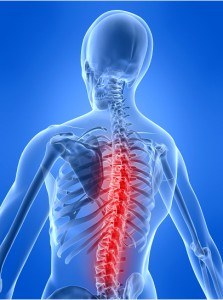Back Pain and Neck pain
Back pain is a symptom that can arise from many causes. The pain arises from structures within the spine (backbone) muscles, ligaments, spinal cord, and spinal nerve roots.The spine (backbone) consists of 4 segments: cervical, thoracic, lumbar, and sacrum, made up of small bones called vertebrae. A spinal segment is composed of two vertebrae: the intervertebral disk between the two vertebra and the two nerve roots that leave the spinal cord, one from each side.
While the most commonly injured area of the spine is the lumbar region with cervical region being the second, there are several types of conditions under the broad topic of back pain.
Some of the most commonly treated conditions include:
- Disc, facet and nerve root pain
- Failed back surgery syndrome
- Musculoskeletal pain: Strain, sprain, spasm
- Sacroiliac disease
- Sciatica
- Degenerative joint disease: Spinal stenosis, disk space narrowing, facet arthropathy
- Spinal Arthritis: Spondylosis
- Arachnoiditis
- Disc Protrusion and Herniation
- Spondylolisthesis
Pain in the back can also be caused by referred pain, which is pain caused by a malfunctioning or diseased area of the body, which is felt in another area, often far from the origin.
Some examples of referred pain that causes back pain are:
- Vascular Origin: Abdominal aortic aneurysm, arterial occlusive disease
- Gallbladder: Obstructed bile ducts, distended gallbladder
- Gastrointestinal: Perforated viscus
- Pancreatic origin: Cancer, pancreatitis
- Gynecological origin: Ovarian cancer, endometrial cancer
- Renal: Stones, cancer
If the pain is keeping you from doing things that you do every day, and/or the problem does not go away within a few days, or if any of the following symptoms are present, it is advised that you consult a health care professional.
- Leg or Foot Pain.
- Leg or Foot Numbness.
- Leg or Foot Weakness
Basic Treatment Options: The goal of the treatment of back pain is to decrease the pain so that the patient can cooperate with corrective and restorative physical therapy.Using a multi-modal approach:
- Physical Therapy and Exercise Programs
- Epidural Steroid, Facet, Intrathecal, Transforaminal Injections/Blocks
- Radiofrequency Thermo-Coagulation
- Lysis of Epidural Adhesions
- Intra-discal Electrothermal Annuloplasty(IDET)
- Percutaneous Disc Decompression Procedures
- Spinal Cord Stimulation
- Intrathecal Drug Delivery
- Psychological evaluation and counseling

Evaluation There are multiple causes of back pain and determining its cause requires a thorough, systematic physical examination to determine the patient’s health and general fitness including but not limited to the following procedures. In addition, the exam would include a review of the patient’s medical and family histoary.
- Palpation (exam by touch) determines spinal abnormalities, areas of tenderness, and muscle spasm.
- Range of Motion measures the degree to which a patient can perform movement of flexion, extension, lateral bending, and spinal rotation.
- Laboratory tests such as complete blood count and urinalysis may be ordered.
Additional testing may be employed including:
